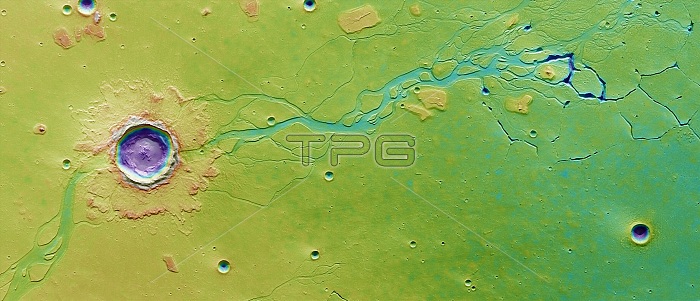
This image shows a region of the planet's northern hemisphere known as Hephaestus Fossae - after the Greek god of fire - that was imaged by the high-resolution stereo camera on ESA's Mars Express orbiter on 28 December 2007. The image has been colored to indicate the elevation of the terrain: green and yellow shades represent shallow ground, while blue and purple stand for deep depressions, down to about 4 km. Scattered across the scene are a few dozen impact craters that cover a wide range of sizes, the largest at a diameter of around 20 km. The long and intricate canyon-like features that resemble riverbeds are the phenomenal aftermath of the same fierce impacts that created the largest craters. When a small body such as a comet or an asteroid crashes at high speed into another object in the Solar System, the collision dramatically heats up the surface at the impact site. In the case of the large crater seen in this image, the heat produced by such a powerful smash melted the soil - a mixture of rock, dust and also, hidden deep down, water ice - resulting in a massive overflow that flooded the surrounding environment. Scientists believe that the most powerful impacts on Mars were able to dig deep enough to release part of the frozen reservoir of water lying beneath the surface.
| px | px | dpi | = | cm | x | cm | = | MB |
Details
Creative#:
TOP22314508
Source:
達志影像
Authorization Type:
RM
Release Information:
須由TPG 完整授權
Model Release:
N/A
Property Release:
No
Right to Privacy:
No
Same folder images:

 Loading
Loading